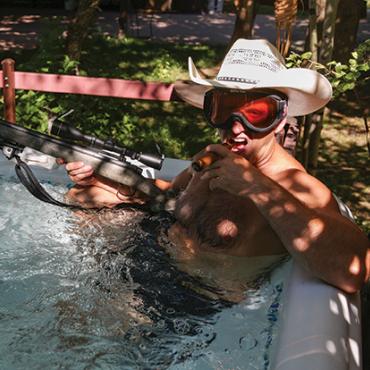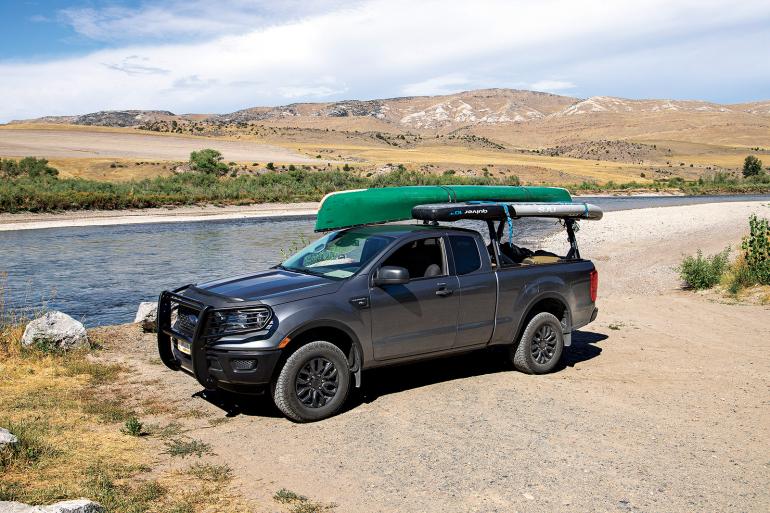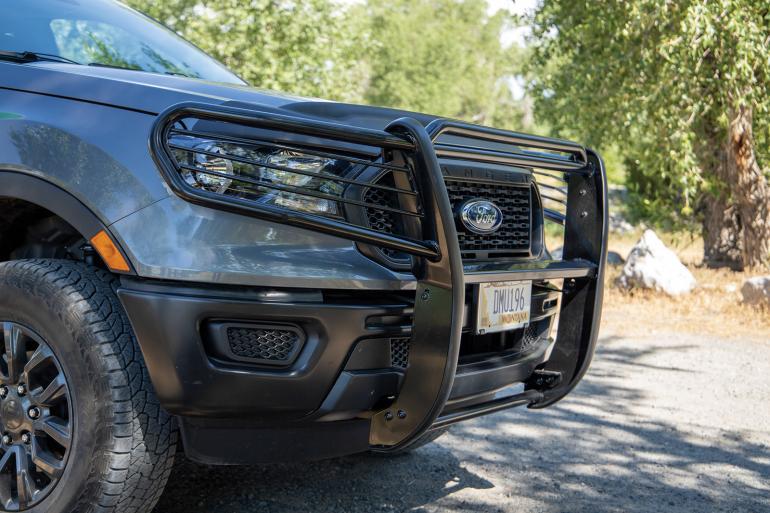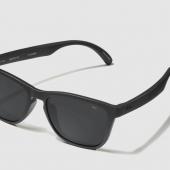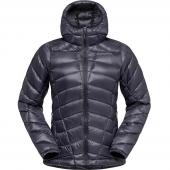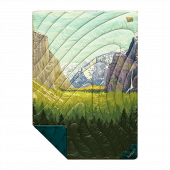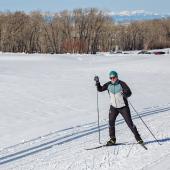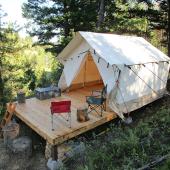Load 'Em Up, Head 'Em Out
Building an outdoor rig, part two.
In Bozeman, equipping a vehicle for outdoor pursuits is no mean feat. There’s just so much to do: fishing, floating, biking, hunting, skiing, climbing—and about 17 other activities, each of which requires its own set of specialized equipment to haul around. Even if you limit yourself to just a few (why?), there’s usually a hefty pile of gear involved. And one season of stuffing a bike into the back of an Outback is enough—out comes the wallet, and on goes a bike rack. You can’t put a price on sanity.
In my case, two of the most gear-intensive activities are paddling and hunting. In the fall, I do both. Which means endless miles on long, bumpy dirt roads one day, and endless hours on long, brush-choked logging roads the next. Over the course of the season, my truck will take some serious abuse—and, when heading down a remote byway, there’ll be some serious risk of creaming a deer along the way. So, how can I lug around all my gear, keep it secure, and protect my new truck while doing so? And how to choose from the slew of available options?
Give yourself a couple hours for installation— there’s a lot of measuring, nudging, and jiggling to get things lined up just right.
The first step was truck drawers, for storing guns, river gear, and other items, which I outlined in the last issue (“Decked Out,” p. 86). Watercraft-hauling was up next, and after much deliberation, I settled on the Yakima OverHaul HD bed rack. What sold me was not only the bomber construction—it can take 500 pounds on-road and 300 off—but the versatility. With its adjustable height, I can raise the rack for headroom and large-item storage, or lower it for fuel economy and garage access. It’ll carry anything, from my canoes and paddleboards to rocket boxes or rooftop tents. Most importantly, my watercraft ride well and are extremely secure—the integrated tiedown points at the end of the crossbars make a quick and easy connection for cam straps. Reef on 'em hard enough and there’s no need for additional lashing front and rear, even when driving the interstate at 80mph.
Several crossbar lengths are available; I chose the 68-inchers, which hold two canoes without protruding out from the side of the vehicle. Optional side rails allow you to turn the rack into a full-on overlander, with attachment points for shovel, jack, and water and gas cans. Both the crossbars and side rails are compatible with various mounts and other accessories from Yakima (and other companies), so the only limits are imagination and budget.
Give yourself a couple hours for installation—there’s a lot of measuring, nudging, and jiggling to get things lined up just right. Height adjustment also takes a little work; best to solicit a friend’s help, lest the neighbor kids overhear an occasional expletive. But the end result is a rack that’s strong as an ox and adaptable as a coyote—and one that doesn’t require drilling holes into your truck. Eight bedrail clamps and she’s solid. And then, you’re ready to roll—with as many boats and boards as you have cam straps for.
As for protecting my new rig from frontal impact, the Westin Sportsman grille guard stood out from the crowd. Size, weight, and price all came together to edge out the other grille guards on the market. The Sportsman’s solid, one-piece construction and double hood-bar offer peace of mind for those long, lonely highways in deer country, while the wrap-around headlight protectors ward off wayward branches when tooling forest roads. Rubberized plastic strips soften the vertical bars, and multiple mounts allow installation of fog lights—invaluable tools on those misty mornings in late fall.
Installation was easy—I did it myself in the garage in two hours flat—and the four-bracket system strengthens the mount for confidence in sketchy conditions. Head-on impacts, I’m no longer worried about. High-speed front-quarter collisions might still pose a problem, but the only way to really protect against those is a full-on bull-bar bumper, which costs upwards of two grand, plus installation fees. My Sportsman came in at a much-more-affordable $850.
One caveat: be sure to check Westin’s Application Guide before purchasing—I failed to do so and had a dangling skid plate, as the new grille guard brackets didn’t line up. Luckily, Rough Country makes an upgraded tow-hook kit that includes brackets; another $70 and I was back in business. Other after-market options exist for various makes and models; surf the mighty internet to find something suitable for your particular outfit.
For a full rundown of the author’s Ford Ranger build, from barebones utility truck to all-purpose off-road recreational rig, click here.


